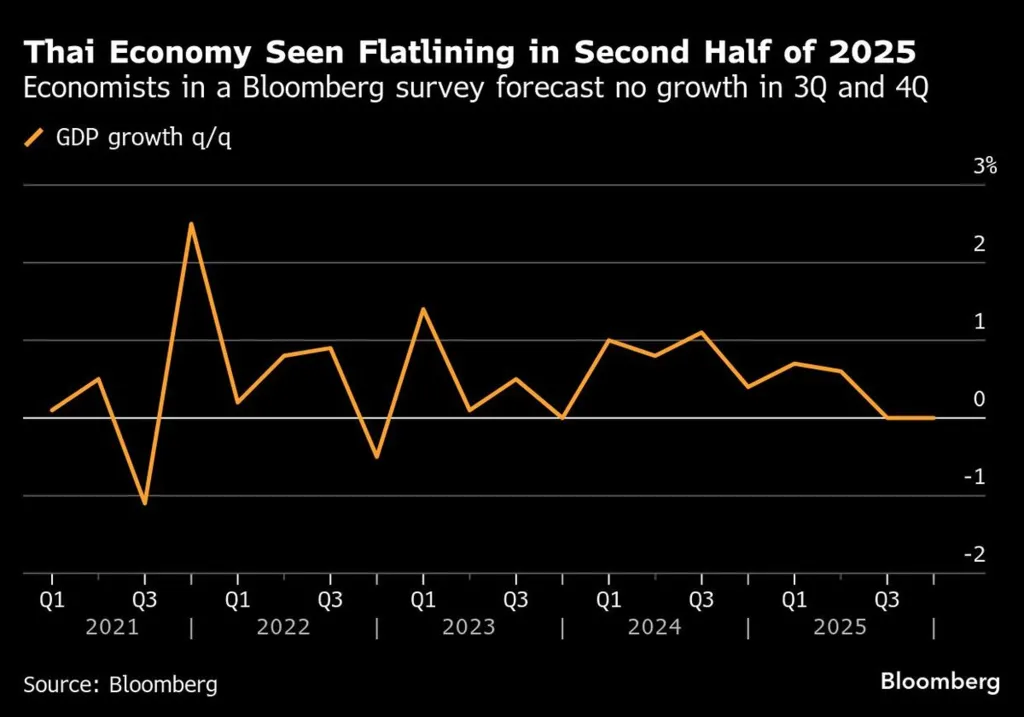Thailand has rolled out a bold economic move. The Cabinet has approved a 44 billion baht stimulus package designed to spark consumer spending and lift economic confidence. Called the Thailand Co-Payment Program, this plan aims to support 20 million citizens and strengthen growth in the final months of 2025.
Is The Thailand Co-Payment Program a Powerful Boost for Consumers?
In simple words, it can be. The program works as a co-payment system where the government subsidizes up to 60% of the cost of food, drinks, and other essential goods. Eligible Thai citizens aged 16 and above will benefit from the initiative, which runs from October 29 through December 31, 2025.
Each participant will receive a grant of at least 2,000 baht to spend on daily purchases through participating vendors. For most people, the subsidy will follow a 50:50 model, meaning the government pays half and the buyer pays the other half. However, tax-registered individuals will enjoy an even higher 60% subsidy, up to 2,400 baht.
This direct support aims to ease financial pressure on households and motivate people to spend more, giving local businesses a much-needed lift.
Thailand Co-Payment Program Targets Growth Without Borrowing
The 44 billion baht stimulus is part of a broader government effort to stimulate the economy without increasing public debt. Unlike past stimulus measures that relied on borrowing, this package will be funded from existing fiscal resources. That means Thailand can inject liquidity into the market while keeping its financial position stable.
The co-payment scheme also ties into broader reforms, including tax system updates and support for small businesses. Together, these measures are expected to reinforce domestic demand and help the economy recover from slow growth and weak confidence.
Expected Economic Impact

Analysts expect this co-payment program to make a clear mark on the country’s GDP. Government projections suggest it could raise GDP by 0.22% to 0.4% in 2025. Some forecasts even predict that fourth-quarter growth could exceed 1%, a big jump from earlier estimates of only 0.3%.
For an economy still grappling with high household debt and fragile consumer confidence, this program is seen as a “quick big win.” It’s designed to get money moving quickly through the system — from citizens to vendors, and from vendors to suppliers — generating a ripple effect of economic activity.
Read Also: Thailand Debt-Buyback Stimulus Targets Families & Households
Reinforcing Local Businesses
While the program mainly helps consumers, it’s also a significant opportunity for small and medium-sized businesses. By encouraging spending at registered local shops and markets, the government ensures that stimulus money stays within communities. Vendors who participate benefit from increased sales, faster turnover, and renewed customer traffic.
This dual approach, helping consumers and businesses, reflects the government’s focus on inclusive economic recovery. It strengthens local economies while boosting the nation’s overall growth outlook.
Confidence Through Action
In recent months, Thailand’s economic growth has slowed due to soft global demand and rising household costs. By directly supporting consumption, the Thailand Co-Payment Program aims to restore confidence and revitalize spending before the year ends. It’s a clear signal from the government that they are ready to take proactive steps to stabilize the economy.
Read Also: Thailand Gold Tax Opposition Intensifies in 2025
Thailand Co-Payment Program: Exploring Opportunities
As Thailand moves ahead with this ₿44B initiative, many businesses and investors are watching how the program reshapes the local market. The Thailand Co-Payment Program is not just a short-term boost, but a model for smart, targeted stimulus that balances economic growth with fiscal responsibility. For organizations seeking expert guidance on market trends, policy shifts, or economic opportunities in Southeast Asia, Market Research Thailand offers global insight and local expertise. To explore how your business can benefit from Thailand’s evolving economic landscape, reach out to Market Research Thailand today.







